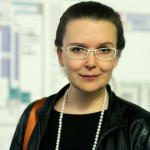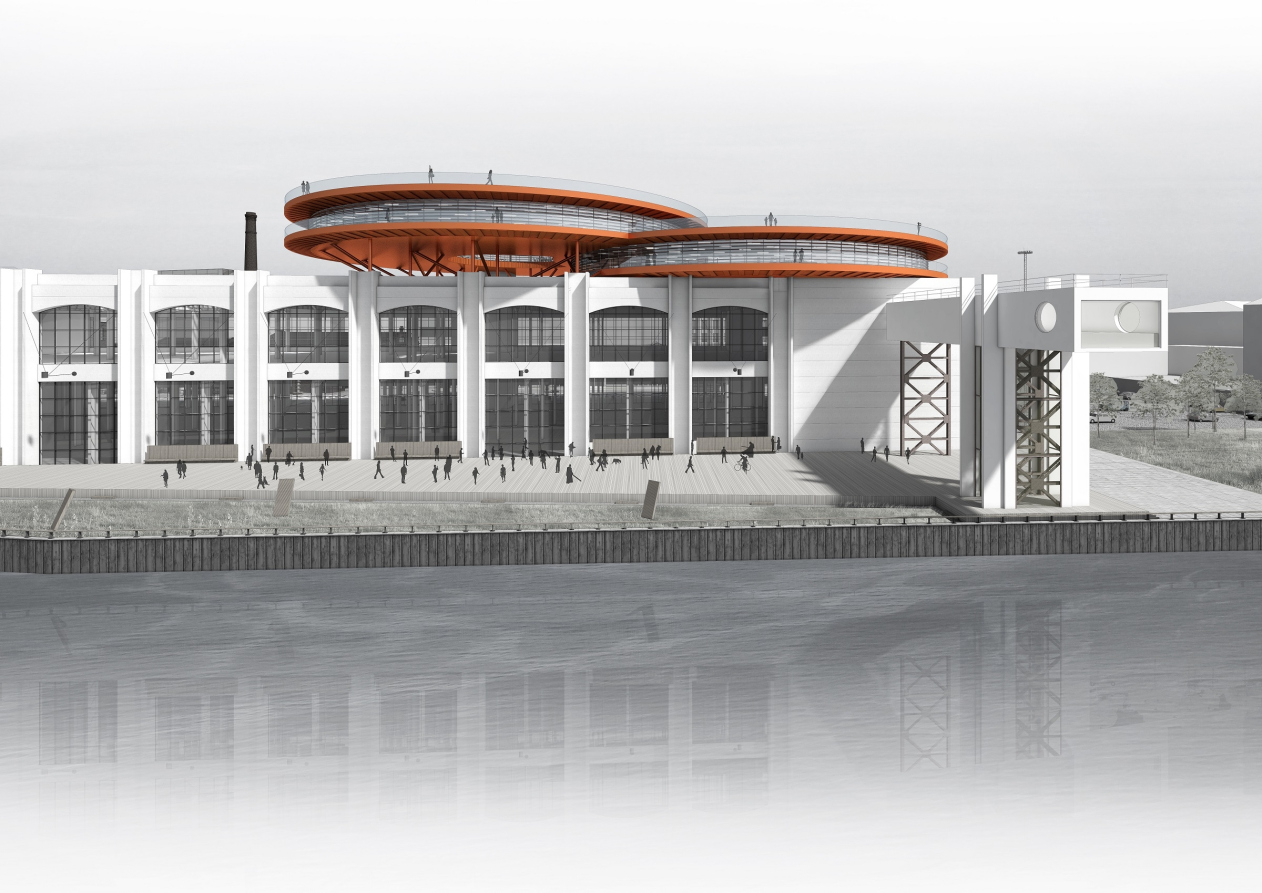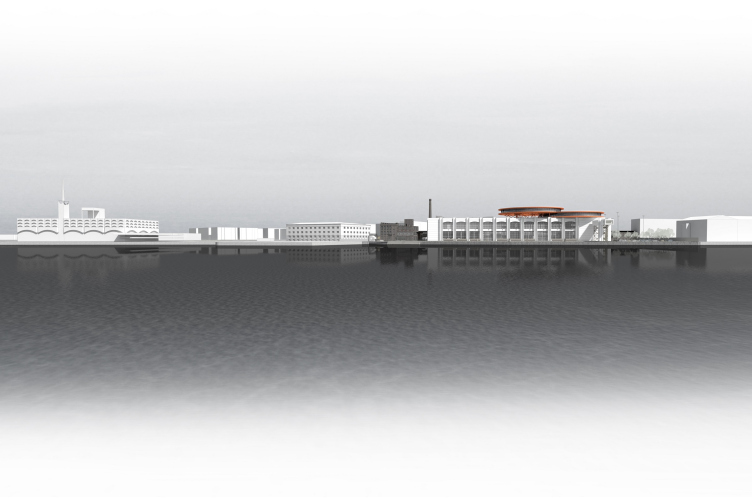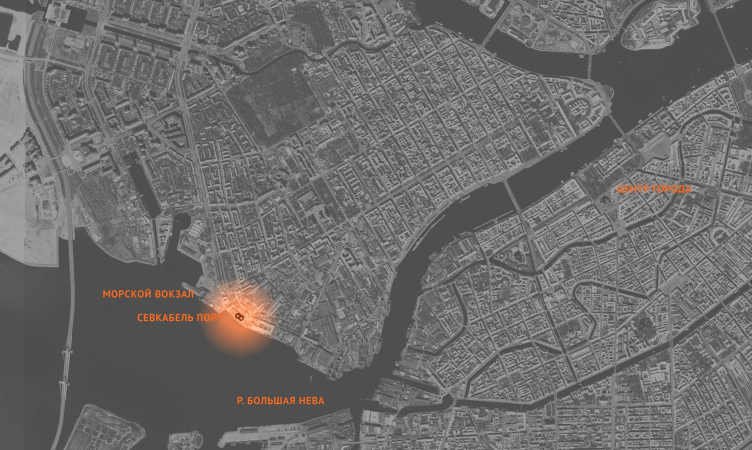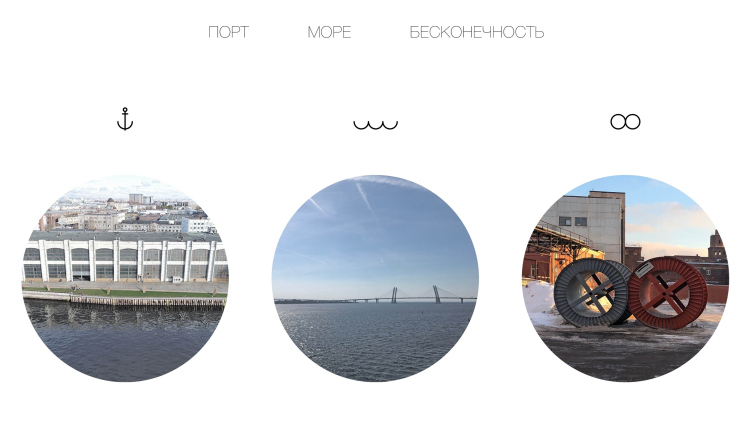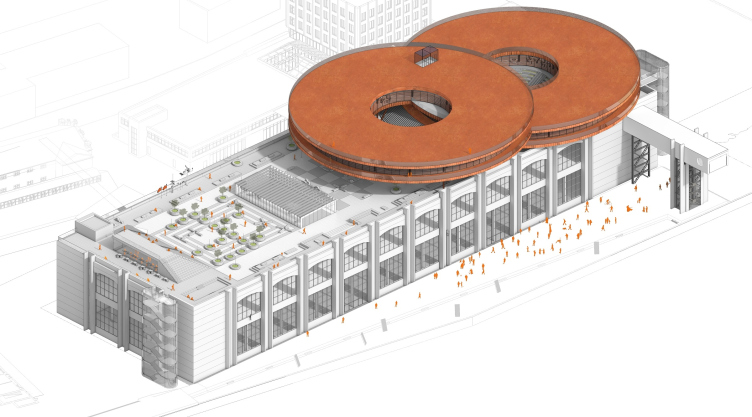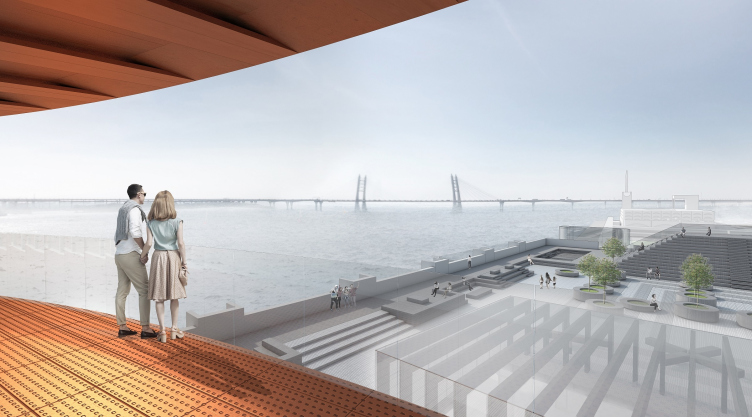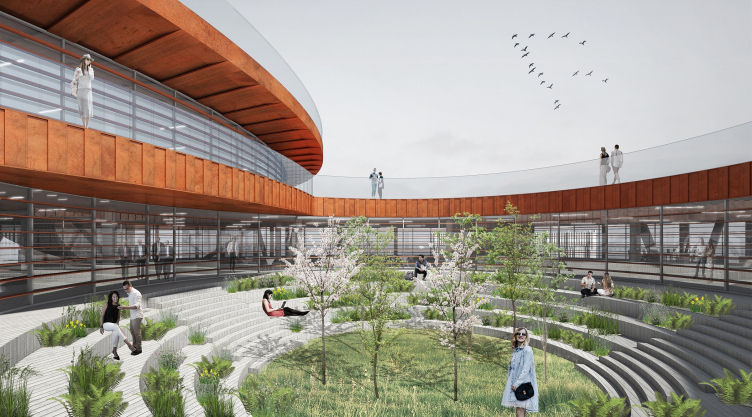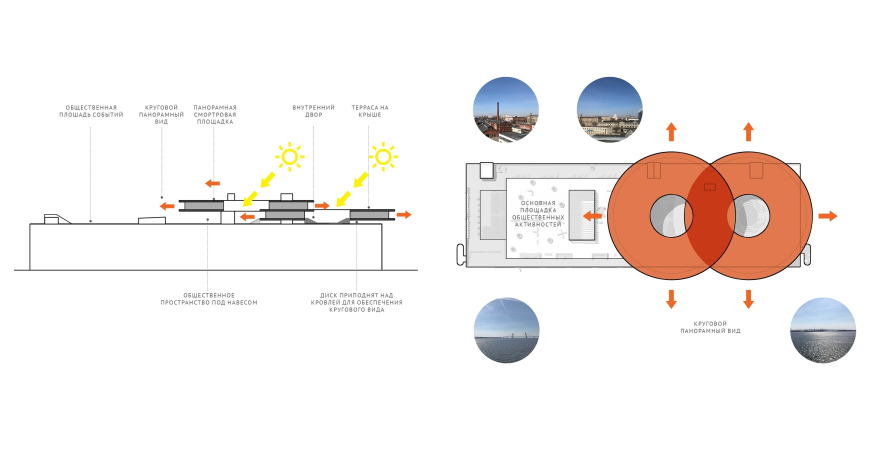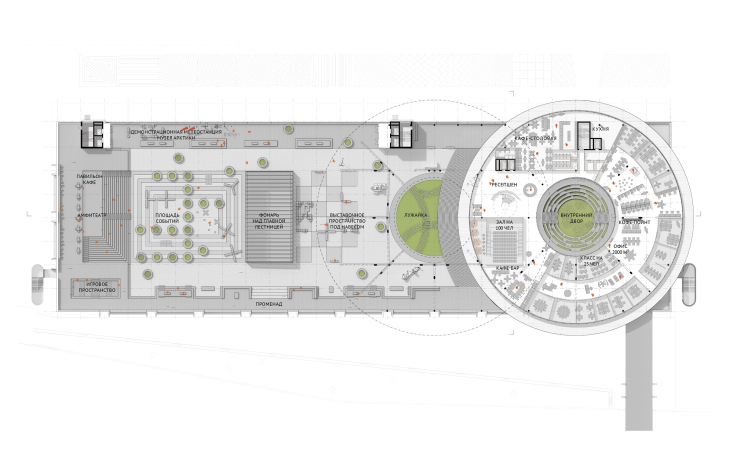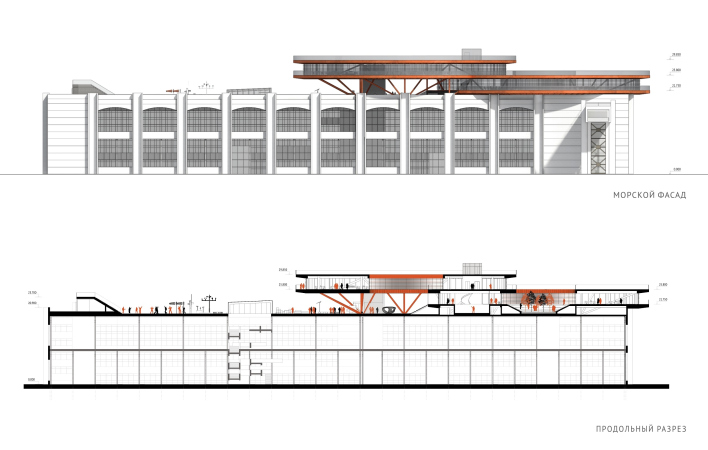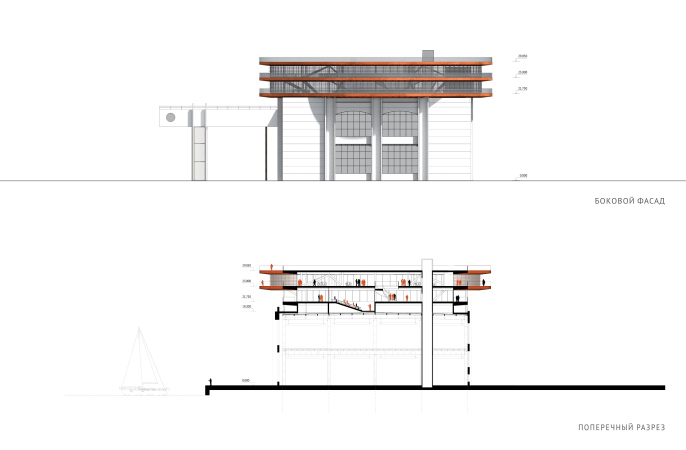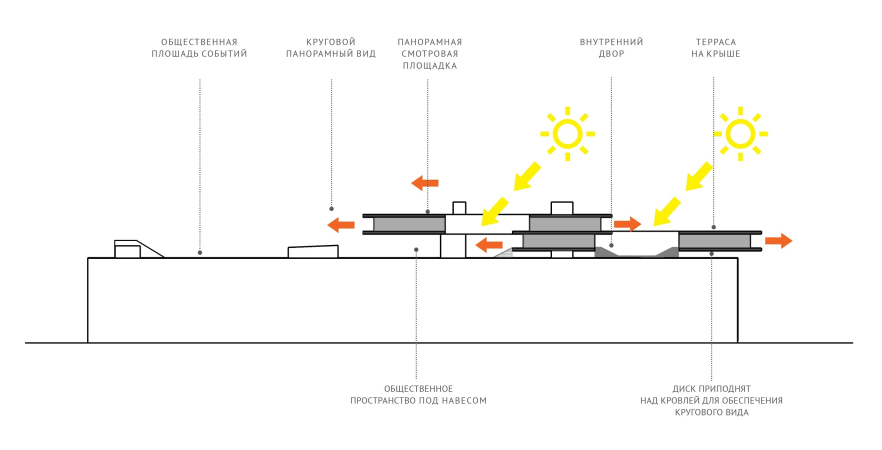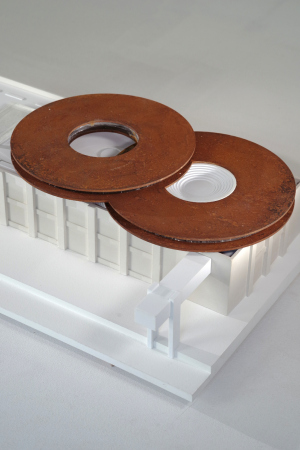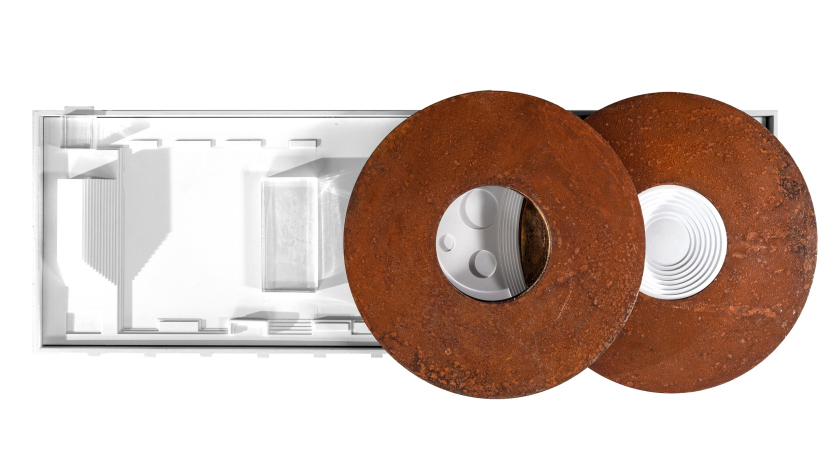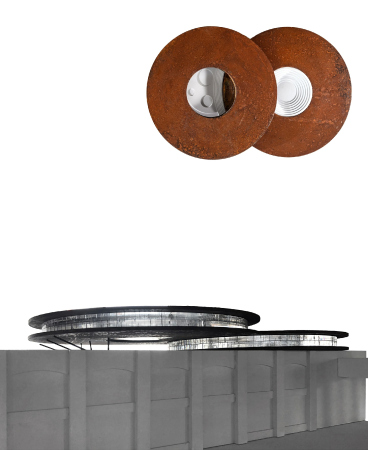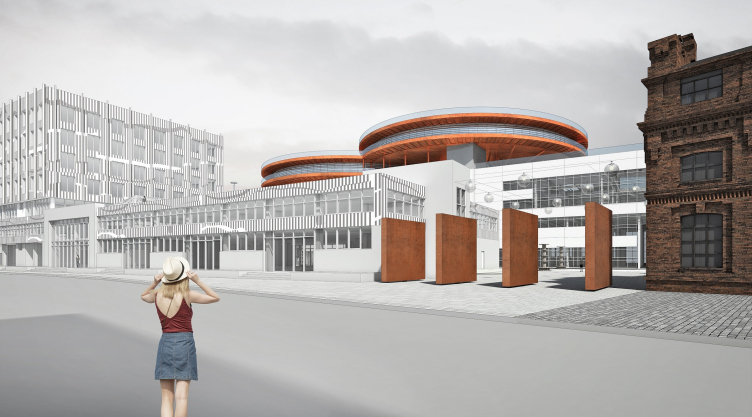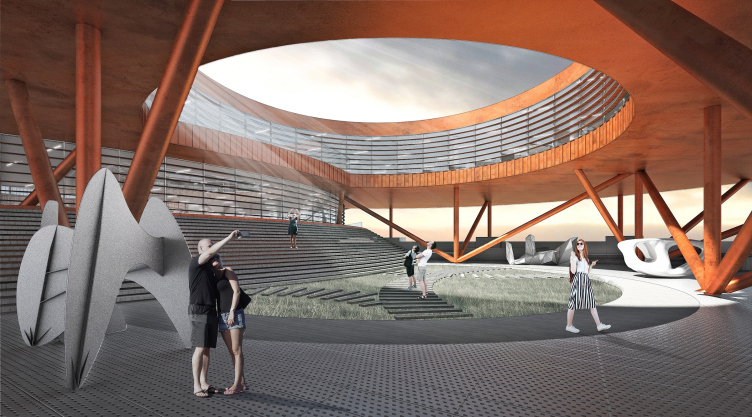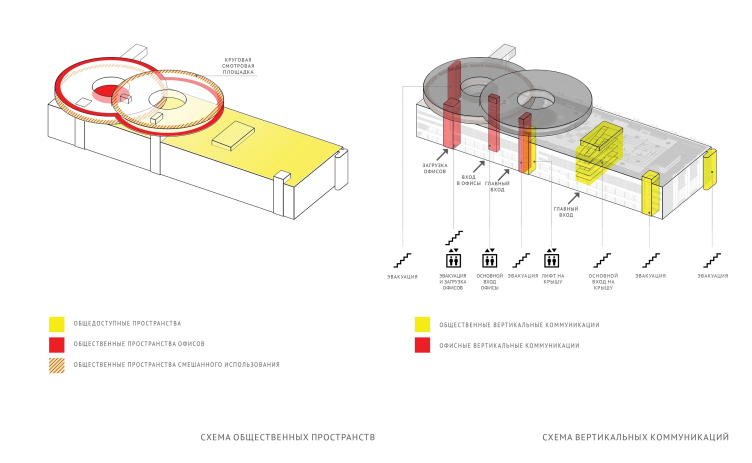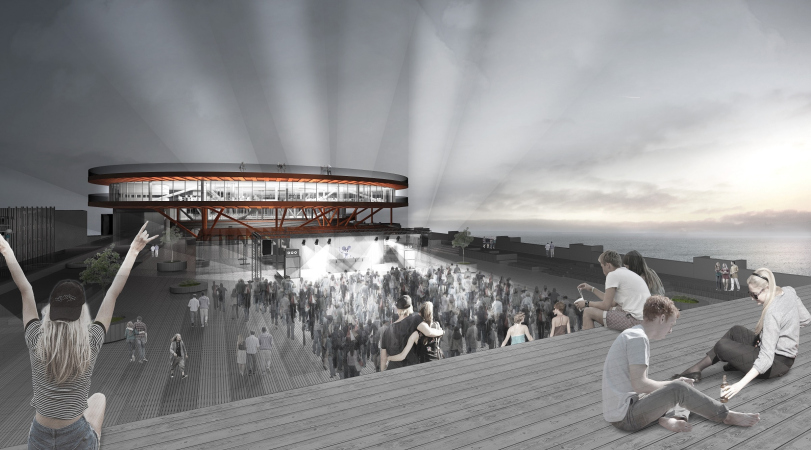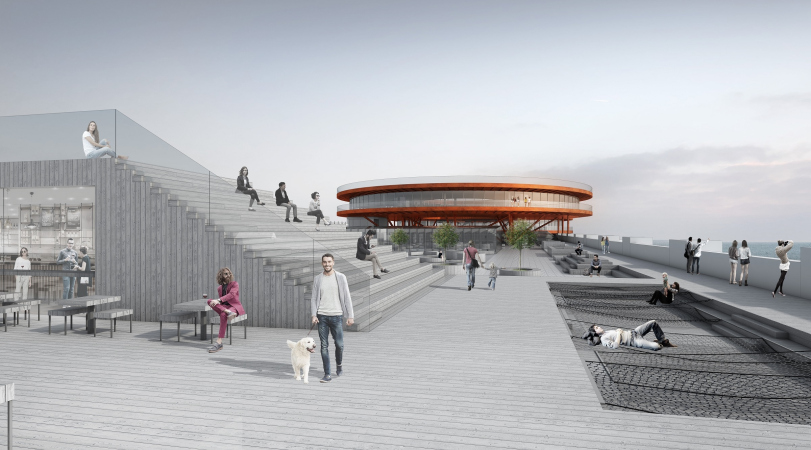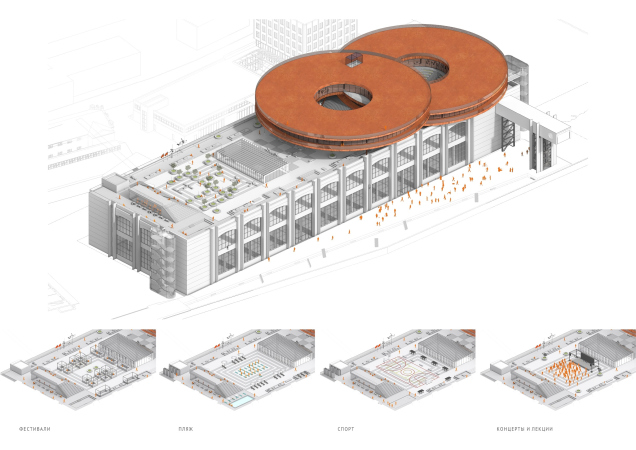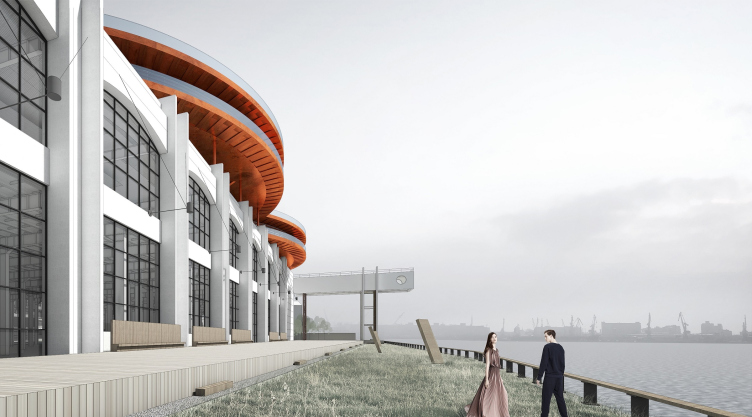Founded back in 1879 by Carl Siemens, Russia’s oldest cable factory, renamed after the Great October Socialist Revolution into “Sevkabel” (“North Cable”), is situated in the west part of the Vasilyevsky Island in the Neva estuary, not far away from the brutalist building of the Morvokzal (“Sea Terminal”) designed by Vitaly Sokhin (not to be confused with the Sea Façade of Saint Petersburg). For years, the Sevkabel land has been undergoing postindustrial transformations: the production process was reorganized, it began to consume less space, and the vacated premises hosted creative studios, restaurants, and a farmers’ market; the waterfront was also renovated, and the place became popular. Meanwhile, it is planned that the nonhazardous production will be preserved here but now it will coexist with the city life. The master plan for the territory of the factory was designed by Khvoya Architects, and the same architects are working on renovating Building B, a large concrete building on the bank of Neva. This building must become something like a river façade of the renovated territory because it looks really great from the water, and, at the same time, it commands magnificent river views as well. For this reason, for “making a campus on the roof of Production Building B within the framework of the next stage of redevelopment of the territory”, the managing company Sevkabelport organized an open-door international competition named “Gorizont”. Technically, the operator of the competition was “Project Baltia” magazine. The results were announced at the end of May. The competition was won by the project developed by DNK ag, more of which we are covering below.
Concept of the public and office campus on the roof of Production Facility B on the territory of “Sevkabel Port”. View from the river
Copyright: © DNK ag
Concept of the public and office campus on the roof of Production Facility B on the territory of “Sevkabel Port”. The sea facade
Copyright: © DNK ag
Concept of the public and office campus on the roof of Production Facility B on the territory of “Sevkabel Port”. Location plan
Copyright: © DNK ag
The contestants were to do the following tasks: to place on the roof of the Soviet concrete building an open-air public space overlooking the Neva River, whose estuary here is about a kilometer wide; to create a project that could claim a landmark status – not least because of the fact that this year they launched a regular tourist boat coming into the estuary, making it a part of the city’s representative “river façade”. And, finally, they had to find room for some office premises in the roof. The authors were issued with a scheme of approximate loads that, according to estimates, the framework of the building could bear – according to the provided data, it was clear that chiefly the building could be more loaded on the eastern, right-hand side (if watched from the river), and less loaded on the left-hand side.
Concept of the public and office campus on the roof of Production Facility B on the territory of “Sevkabel Port”.
Copyright: © DNK ag
Which determined the composition of the buildup proposed by DNK ag. The bulk of the office part was positioned on the right; it got an iconic shape of two cable coils, looking similar to the ones that are exhibited on the territory of the cluster as a reminder of the factory’s profile, but, of course, not literally replicated – the ones that are on the roof are slender and thin, especially from the side. Still another association that this composition brings about – the infinity sign – was announced by the authors themselves, and, as the architects share, the organizers warmed up to the idea.
Concept of the public and office campus on the roof of Production Facility B on the territory of “Sevkabel Port”.
Copyright: © DNK ag
The disks turned out to be the perfectly ergonomic shape for placing the offices inside of them: two continuous contours of glass, the inner and the outer one, ensure an abundance of ambient light. On the outside, there is a string of breathtaking views of the city and the river, virtually a 360-degree panorama of the city skyline, also an infinity of sorts.
Concept of the public and office campus on the roof of Production Facility B on the territory of “Sevkabel Port”. View from the office
Copyright: © DNK ag
The width of the arc-shaped volumes allows for all kinds of floor plans, both of the “study” and “open space” type – the architects give examples of different options. The useful floor space is occupied by the staircase and elevators as little as possible, two of them being already there in the building (they only need to be extended), and still another one at the intersection of two disks, which ensures equal spacing of the premises, the authors of the project emphasize. On the same central axis, a spiral staircase may appear – if there is one key tenant, this staircase will help to link the two floors with an impressive-looking “swirl”. In the circular yard of the eastern “disc”, there is a yard for the employees’ recreation, invisible to the public eye, yet with an open sky overhead.
Concept of the public and office campus on the roof of Production Facility B on the territory of “Sevkabel Port”. The inner office yard
Copyright: © DNK ag
Underneath the same disk (the one that is situated closer to the side end of the building), the architects found room for ventilation chambers and mechanical rooms that, when arranged in this way, do not spoil the silhouette of the building, being modestly hidden underground.
This solution is not just optimum buy it also looks like a peculiar study of the perfect office space: the quintessence raised to the level of landmark laconism. Because, what is an office, basically speaking? It is a box with glass walls and an atrium in the middle for extra light. And what we are seeing here is the composition of two slices of this typology, brought to the efficient circular shape, without the atrium glazing, and even without corners. It was still Konstantin Melnikov who back in the day was wont to say that the corners are always in the way – let’s remember his house now, shall we? Here is yet another association, this time from the classic avant-garde tradition.
The discs are placed with a shift one above the other, in a staircase fashion, as if flying saucers were landing on the roof one by one, on a tight cosmic port schedule. The building material that the authors are recommending – Corten, oxidized iron – makes the discs look even more like the gears of some gigantic mechanism arrested in mid-motion, which further enhances the industrial architecture theme and is read particularly clearly in the model, in which the architects did use Corten plates. The relief of the stripes on the edges of the discs strengthens their likeness with gears and coils – and generally enhances the industrial image.
This retro technological image of “rusty” coils from the side of the Kozhevennaya Line also echoes the Corten “pylon” slabs, designed and made by Khvoya as the decoration of the main entrance to Building B.
Concept of the public and office campus on the roof of Production Facility B on the territory of “Sevkabel Port”. View from the Kozhevennaya Line
Copyright: © DNK ag
Back to the discs of the offices and the roof, though! More than a half of the open space is public. Two thirds of the upper disc, the bundles of whose pillars come together at the yard contour underneath the “skylight”, serve as the awning above the open yard. This is a transition zone that includes the entrance to the offices from the roof; its steps, replicating the arc of the other disc, are juxtaposed with the amphitheater. This cantilevered structure is very large; rather, it is not even a cantilever but a whole house on legs – it not only overhangs beautifully, but it is also large enough to give protection from the inevitable rain or rare sunshine of Saint Petersburg. The part covered by the awning is also interpreted by the architects as expo space that is protected from the rain.
Concept of the public and office campus on the roof of Production Facility B on the territory of “Sevkabel Port”. The yard, entrance
Copyright: © DNK ag
In the middle of the open part of the roof, there is a glass casing of the central stairway – part of the reconstruction of the building by the Khvoya project. Behind it, there is an open square for concerts and other public events; its main peculiarity consists in the fact that it is transformable: you can create here different compositions and partitions by means of moving the mobile benches and tubs with decorative trees. Further on, next to the open western edge, there is a cafe pavilion, whose two sides are turned into the stairs of the amphitheater. From here, just like from the roof of the café, one will be able to watch the shows.
Concept of the public and office campus on the roof of Production Facility B on the territory of “Sevkabel Port”. Schemes
Copyright: © DNK ag
Generally speaking, the architects had their fill of playing with elevations and depressions: according to the project, the entire floor of the roof will be elevated in order to make sure that the existing concrete fence does not stop people from admiring the panorama. However, the pavement has in it dents for hammocks for meditative rest. Alongside the panorama, stretches a string of “bumps” of benches that sometimes spring up with two or three steps of a mini-amphitheater for contemplating the water and the city. In the north part of the open roof, DNK ag placed a small weather station for the Arctic Museum, which, according to the project, will be placed, among other things, in the main part of Building B.
In a word, the functions of the open space are flexible here and can support a whole number of various scenarios. And, to cap it all, one will also be able to take a walk on the roof – there will a looped route about 400 meters long. The details are to come up in the process of realization but so far there is an idea of making a loop of the second disc on the level of the roof, and a looped sightseeing platform on the roof of the first cantilevered disc.
What they ultimately got here was a curious type of office – not exactly groundbreaking but still rare in these parts: on the one side, there is this part of the cluster of the former factory, and, on the other side, a completely new building in a very advantageous location, high up, and with great panoramas – the perfect place for some kind of headquarters, surrounded by a large number of public places, arranged in a sophisticated way in terms of their importance and accessibility, yet still flexible. This project is very postindustrial and at the same time this is a landmark building, a “sign on the wall”, essentially illustrating the peculiarities of Saint Petersburg: this city is horizontal, yet it likes an architectural highlight; in its best parts, your gaze wanders from one landmark to another. And – behold – you’ve got a horizontal here, and a telltale highlight, whose industrial imagery makes a perfect match for the “constructivist” lintel to the transport terminal that is placed closer to the river and at a distance from Building B: from here, the cables used to be loaded directly on ships. Which can be noticed from the river, but especially – from the waterfront.
Concept of the public and office campus on the roof of Production Facility B on the territory of “Sevkabel Port”. Waterfront
Copyright: © DNK ag
